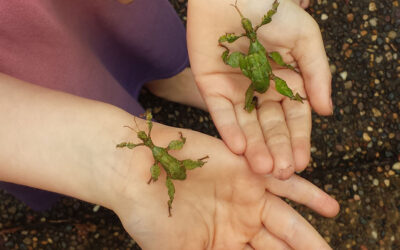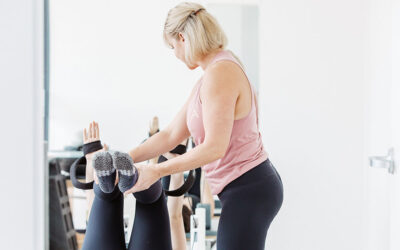Kids love to eat snacks in the afternoon. The problem for parents is finding healthy afternoon snacks that will give their children everything they need. Here we have the secrets to healthy snacks for kids.
Queensland Health’s chief health officer’s report says consistently consuming more than their necessary energy intake potentially leads to future health problems. “Poor diet is estimated to have a major effect on the health of Queenslanders, similar to that of cancer… and about double that of smoking,” it says.
Just as an example, the Australian National Children’s Nutrition and Physical Activity Survey found 47% of four-year-old boys are exceeding their estimated energy requirements (EER). In contrast, 6% of four-year-old girls are eating less than their EER.
The secret to healthy afternoon snacks
Increasing dairy consumption
A survey by the Commonwealth Scientific and Industrial Research Organisation (CSIRO) found children of all ages are not eating enough dairy foods. It reports that calcium is the only nutrient for which the majority of children across all age groups are not meeting the EER.
Wesley Weight Management Clinic’s accredited practising dietician Catherine Fallon agrees that children have not been consuming the recommended levels of dairy foods, and this has been the basis of advertisements for calcium-rich snacks for kids.
“The recent media attention surrounding calcium in the afternoon as a snack arose in response to recent research that found that up to 84% of school-aged children were not getting the recommended daily serves of dairy,” she says.“Protein-rich foods do provide a number of key nutrients for children, including calcium, iron and magnesium.
“If incorporating dairy-based snacks, low-fat options are the healthier choice.”
All-day breakfast for calcium
A Queensland Health dietician/nutritionists’ consensus document suggests considering breakfast cereal with milk as a snack at any time. Queensland Health suggests kids between 1-8 eat 3-6 dried apricots for afternoon tea, and kids 9-13 consume a banana. Both these fruits provide 20mg of their daily calcium intake. For children 14 years and above, a banana smoothie in the afternoon can provide more than 20% of their recommended daily calcium.
The Dieticians Association of Australia (DAA) says calcium ensures children grow to have strong bones and teeth.
“Children need three serves of dairy foods each day, with a cup of milk being one serve,” the association explains. “Reduced fat milks are not suitable for young children under two years of age, because of their high energy needs. However reduced fat varieties should be encouraged for older children and adolescents.”
Queensland Health says if cow’s milk is not your preference, a 200ml glass of soy milk will contribute the same amount of calcium. Eating snacks as a source of calcium doesn’t have to be boring either… Catherine points out that two scoops of low fat ice cream are just as beneficial as milk.
The way kids snack
The CSIRO regards healthy snacks as part of a structured diet and reminds parents to remember these little extras. The DAA agrees. “Children are very good at responding to their appetites and therefore may eat most of their food as snacks rather than at mealtimes.”
“Aim for your family to eat breakfast, lunch and dinner with scheduled morning and afternoon snacks… Without a meal structure, it is easy to eat for the wrong reasons, like boredom or when you are in a hurry. These situations can lead to unhealthy food choices and over-eating.
“Children need to eat appropriately sized main meals and may also have healthy snacks between meals. The between-meal snack needs to be eaten at about the same time every day to avoid children ‘grazing’ …”
Catherine agrees that snacks are part of a child’s diet and schedule. “Snacks are an important part of a child’s day… The key to ensuring appetites are not spoilt in children in particular, is to eat snacks at least two hours before main meals,” she says.
“There’s no single ‘magic’ snack that every child should be eating.
“The best snacks are foods that satisfy hunger and provide lots of nutrients – choosing nutrient-rich snacks and avoiding energy-dense, nutrient-poor snacks is key. Portion sizes are fundamental. Fresh foods that are a source of whole grains, fibre, fruit, vegetables or calcium (dairy) are better choices.
“Sometimes, however, we may need to have that packaged snack on hand for convenience,” Catherine says.
Hidden surprises in packaged goods
The DAA advises checking the labels when buying packaged snack foods to ensure they are low in saturated fat, salt and kilojoules.
Catherine says ideally, a snack should be less than 600kJ. “Check for added sugars by looking at the ingredients list,” she explains. “Some sugars are naturally occurring (those found in milk and fruit) but a food is likely to be high in added sugar if sugar is one of the first two ingredients listed.
“More important than the amount of fat is the type of fat a food contains – aim for less than 2g saturated fat per serve… and target less than 100mg sodium (salt) per serve.”
Healthy and sweet
The CSIRO survey found that as children get older, their intake of cereal products and cereal-based products increases considerably.
“In Australian children, a fifth of their fat consumption comes from foods like sweet biscuits, cakes and pastries… These factors lead to high kilojoule intake, which can cause unhealthy weight gain,” it says.
Vegetables and fruit as the perfect snack
While children 14-16 eat the least amount of fruit, the survey found kids 2-3 commonly eat the most. However, older kids consume about double the portion of vegetables that younger children do. “After-school snacks are a great opportunity to increase fruit and vegetable intake,” says Catherine.
The DAA has found that many people incorrectly think that drinking juice is healthy. Unfortunately, too much juice can diminish kids’ appetites and increase kilojoule intake considerably, posing a health risk. Fresh fruit is preferred.
“Fresh fruit provides a range of vitamins and minerals and adds fibre to the diet. Children are much more likely to eat small pieces of fruit or fruit that is cut into pieces,” the DAA explains.
3 healthy afternoon snack recipes
Sweet Carrot Snacks
Courtesy: 4 Ingredients
4 chilled carrots 2 tablespoons of organic Manuka honey 1 teaspoon of sesame seeds
Peel chilled carrots, cut length by half, then slice into four. Add honey and sesame seeds to small side bowl for dipping.
Fruit Kebabs
Courtesy: 4 Ingredients
1 packet of skewers A selection of fruits Fruit yoghurt or honey Dice fruit into bite-size pieces.
Thread the chosen fruits alternatively onto a skewer, leaving enough room at the base so the skewer can be held. Drizzle with yoghurt or honey.
Ants on logs
Celery stalks Cream cheese Sultanas
Cut celery in manageable sizes. Fill the hollow with cream cheese. Top with sultanas or ‘ants’.
Further information on healthy snacks
For more healthy snacks visit www.4ingredients.com.au
Use the Healthy Eating Self-Assessment tool to determine how your daily food intake compares with the Australian Dietary Guidelines. Visit www.daa.asn.au
You may also like…
5 top tips to make a healthy lunchbox IRRESISTIBLE!
Healthy snacks for kids


